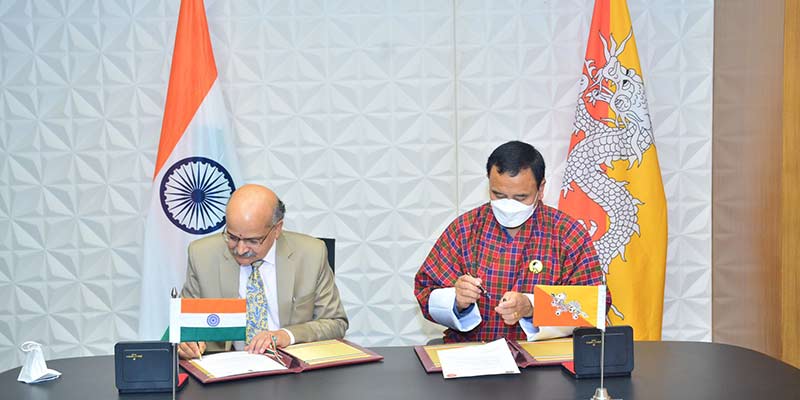- India
- Nov 05
India, Bhutan to have 7 more entry/exit points for trade
India and Bhutan will have seven additional entry and exit points for trade as part of measures to increase trade connectivity.
The decision was taken at a commerce secretary-level meeting held between India and Bhutan on trade and transit issues in New Delhi.
The two sides held extensive discussions on the current trade and transit issues, including measures to further strengthen bilateral trade relations and issues of mutual interest, on ways to increase trade connectivity between the two countries.
Through Letters of Exchange, seven additional entry/exit points for trade between India and Bhutan were formalised.
They are:
1. Nagarkata Land Customs Station without commodity restriction.
2. Agartala Land Customs Station as an entry /exit point.
3. Pandu port (Guwahati Steamerghat) as an entry /exit point, subject to cross border control at Dhubri.
4. Jogighopa port as an entry/exit point, subject to cross border control at Dhubri.
5. Asian Highway 48 connecting Torsa Tea Garden in India and Ahllay in Bhutan as an additional route corresponding to the Land Custom Station at Jaigaon.
6. Kamardwisa as an entry/exit point.
7. Birpara as an entry/exit point.
This will form an addendum to the Protocol of 2016 India-Bhutan Agreement on Trade, Commerce and Transit. This will facilitate India-Bhutan bilateral trade to mutual advantage.
Trade between India and Bhutan has more than doubled from $484 million in 2014-15 to $1,083 million in 2020-21.
India-Bhutan relations
• The basic framework of India-Bhutan bilateral relations is the Treaty of Friendship and Cooperation signed in 1949 between the two countries and revised in February 2007.
• Diplomatic relations between India and Bhutan were established in 1968 with the establishment of a special office of India in Thimphu.
• An agreement on trade and commerce between India and Bhutan was first signed in January 1972. Since then, the agreement has been renewed/revised many times.
• In November 2016, both countries signed an Agreement on Trade, Commerce and Transit, which provides for a free trade regime aimed at boosting bilateral trade for mutual benefit.
• The government of India has consistently supported the socio-economic development of Bhutan. Hydropower cooperation between the two countries is an example of win-win cooperation.
• India has been extending economic assistance to Bhutan’s socio-economic development since the early 1960s when Bhutan launched its Five Year Plans.
• Mutually beneficial hydropower cooperation with Bhutan forms the core of bilateral economic cooperation. For Bhutan, hydropower development continues to be a vital catalyst for socio-economic development. The ongoing cooperation between India and Bhutan in the hydropower sector is covered under the 2006 bilateral agreement for cooperation and its protocol signed in 2009. Four hydroelectric projects (HEPs) totaling 2,136 MW are already operational in Bhutan and are supplying electricity to India.
• Two hydroelectric projects, 1200 MW Punatsangchhu-I, 1020 MW Punatsangchhu-II in inter-governmental mode and Kholongchu HEP (600 MWs) under the joint venture mode are under various stages of implementation.
• India has committed financial support of Rs 4,500 crore for the 12th Five Year Plan (FYP) of Bhutan (2018-23), comprising Rs 2,800 crore for Project Tied Assistance, Rs 850 crore for High Impact Community Development Projects and Rs 850 towards programme grant.
• India has also committed a ‘Transitional Trade Support Facility’ of Rs 400 crore, to be provided over the 12th FYP of Bhutan.
• Around 600 big and small projects in the areas of infrastructure development, roads and bridges, industries, agriculture, e-governance, community development projects like irrigation channels, farm roads, block connectivity roads, basic health units, etc have been identified by the two sides and are at various stages of implementation.
Manorama Yearbook app is now available on Google Play Store and iOS App Store

